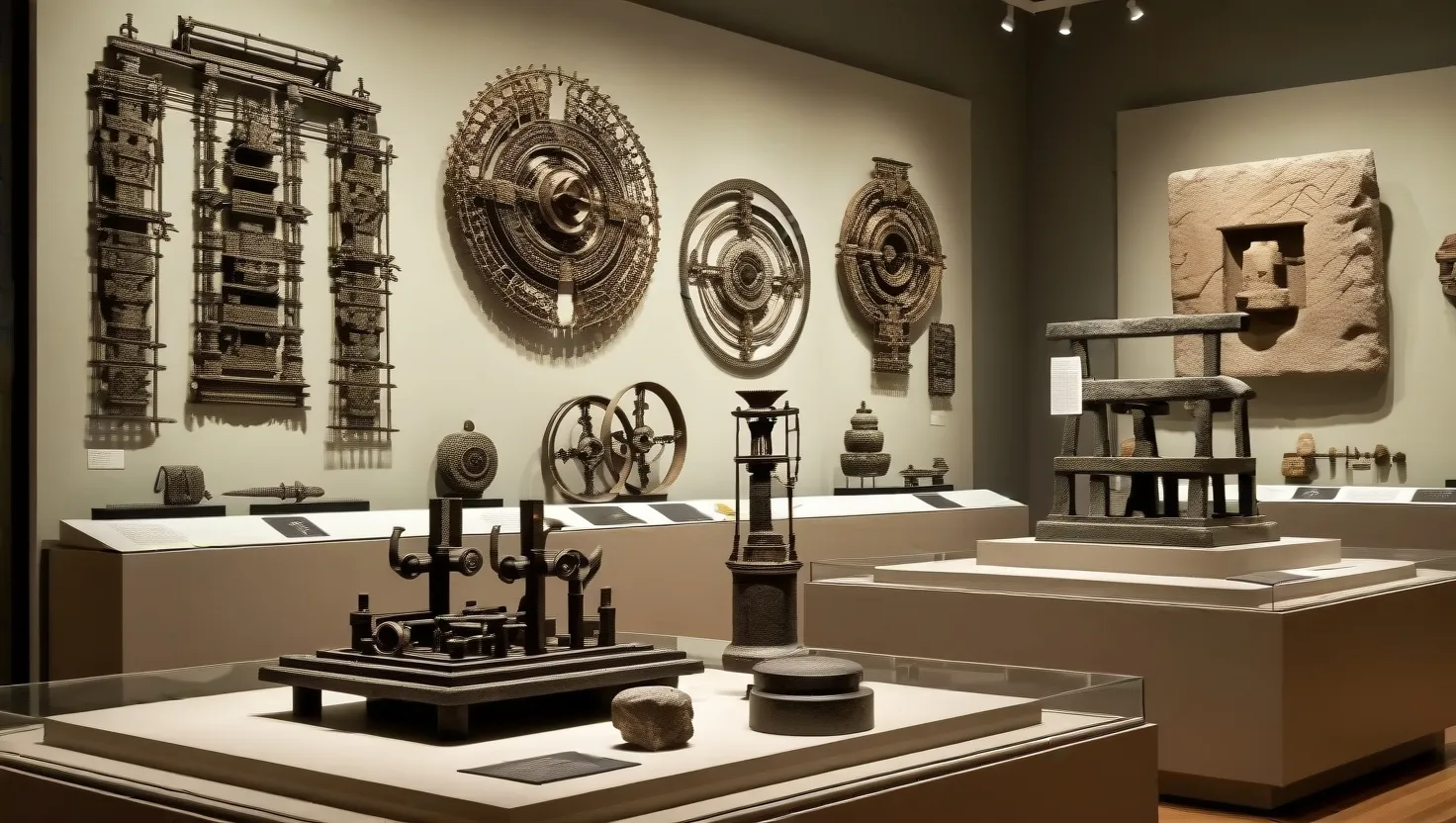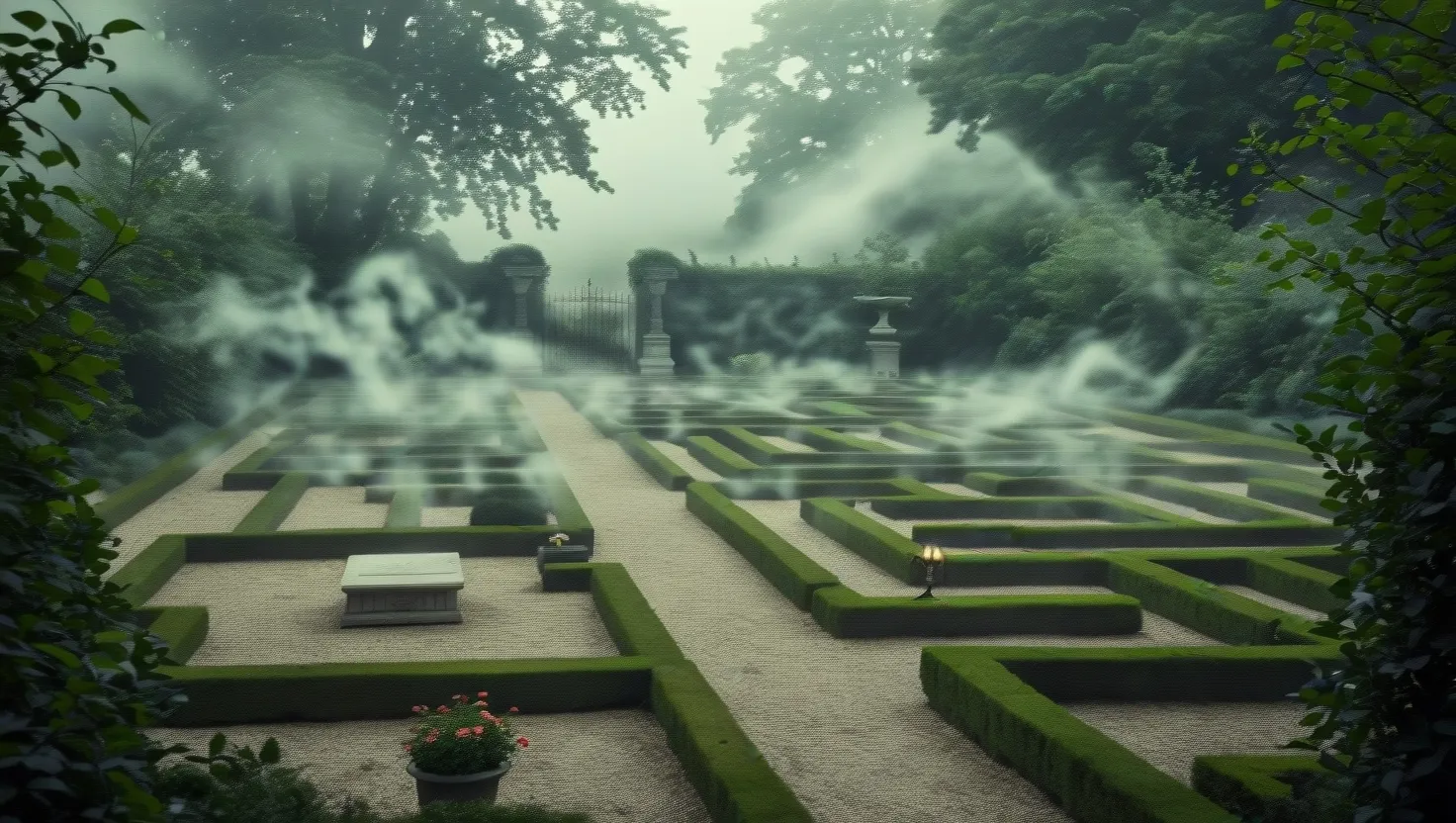As I delve into the realm of ancient technologies, I am constantly reminded of the ingenuity and innovation of our ancestors. These technological marvels, often shrouded in mystery, continue to defy modern understanding and spark our imagination. Let’s embark on a journey to explore seven of these enigmatic technologies that have left scientists and engineers in awe.
The Flexibility of Damascus Steel
Damascus steel, with its distinctive patterned appearance, has been a subject of fascination for centuries. This ancient material, known for its exceptional strength, flexibility, and sharpness, was highly prized by warriors and craftsmen alike. The secret to its unique properties lies in its composition, which includes carbon and other trace elements, but the exact method of its production remains a mystery.
“Science is a way of thinking much more than it is a body of knowledge.” - Carl Sagan
How did ancient craftsmen manage to create such a superior steel without the advanced metallurgical techniques we have today? Theories abound, from the use of specific types of ore to intricate folding and hammering techniques, but the true recipe remains lost to time.
The Durability of Roman Concrete
Roman concrete, or Opus caementicium, is another marvel that has stood the test of time. Unlike modern concrete, which often deteriorates over decades, Roman concrete has endured for millennia. The secret to its durability lies in its unique composition, which includes a mixture of lime, water, and volcanic ash. This ancient concrete was used to build structures like the Pantheon and the Colosseum, which still stand today.
“The greatest glory in living lies not in never falling, but in rising every time we fall.” - Nelson Mandela
What makes Roman concrete so resilient? Researchers have been studying its composition, hoping to replicate its durability. The inclusion of seawater, which contains high levels of magnesium and aluminum, is believed to play a crucial role. However, the exact proportions and mixing techniques used by the Romans remain a mystery.
The Precision of Incan Stonework
In the heart of the Andes, the Incas left behind a testament to their engineering prowess – the precision-cut stonework of Machu Picchu and other Incan sites. These stones, some weighing several tons, fit together with such precision that a knife blade cannot be inserted between them. The technique used to achieve this level of precision is still unknown.
“The important thing is not to stop questioning. Curiosity has its own reason for existence.” - Albert Einstein
How did the Incas manage to cut and fit these stones so perfectly without the aid of modern tools? Theories range from the use of simple yet effective tools made from copper and stone to more complex methods involving the use of plant fibers and water. The exact method, however, remains a topic of debate among historians and engineers.
The Heat Resistance of Indian Iron Pillars
In Delhi, India, stands the Iron Pillar of Delhi, a marvel of ancient metallurgy. This pillar, over 1,600 years old, has resisted corrosion and heat damage, remaining intact despite the harsh Indian climate. The secret to its durability lies in its composition, which includes a high phosphorus content, but the exact process of its creation is unknown.
“Knowledge is power. Information is liberating. Education is the premise of progress, in every society, in every family.” - Kofi Annan
What made this pillar so resistant to heat and corrosion? Researchers have been studying its composition, hoping to understand the ancient techniques used. The presence of phosphorus is believed to have played a crucial role, but the exact method of its incorporation remains a mystery.
The Luminescence of Lycurgus Cup
The Lycurgus Cup, a Roman glass cup, is a fascinating example of ancient nanotechnology. This cup appears green when lit from the outside but glows red when lit from within. The secret to its luminescence lies in the presence of gold and silver nanoparticles, but how these were incorporated into the glass is still unknown.
“The future belongs to those who believe in the beauty of their dreams.” - Eleanor Roosevelt
How did ancient craftsmen manage to create such a sophisticated material? Theories suggest that they may have used a process involving the reduction of metal salts, but the exact technique remains lost to history.
The Sophistication of Greek Antikythera Mechanism
The Antikythera Mechanism, discovered in a shipwreck off the Greek island of Antikythera, is an ancient analog computer that defies modern understanding. This intricate device, made of bronze gears and dials, was used to calculate astronomical phenomena with remarkable precision. Its complexity is unmatched until the medieval period.
“The universe is not only stranger than we think, it is stranger than we can think.” - Albert Einstein
What was the purpose of this mechanism, and how did the Greeks manage to create such a sophisticated device? Theories suggest it was used for calendrical and astronomical calculations, but the exact context and the full extent of its capabilities remain speculative.
The Power Generation of Baghdad Battery
The Baghdad Battery, also known as the Parthian Battery, is an ancient device that has sparked debate about the possibility of ancient electrical technology. While most historians believe it was used for electroplating rather than generating electricity, its true purpose remains a mystery.
“Imagination is the beginning of creation. You imagine what you desire, you will what you imagine, and at last you create what you will.” - George Bernard Shaw
Could this device have been used for more complex electrical purposes? Theories abound, but the lack of clear evidence leaves us with more questions than answers.
Lost Knowledge and Advanced Capabilities
As we explore these ancient technologies, we are often left with the question: did ancient civilizations possess knowledge and capabilities that have been lost to time? The sophistication of these technologies suggests that they may have had a deeper understanding of materials and principles than we often credit them with.
“The only true wisdom is in knowing you know nothing.” - Socrates
What if these technologies were not isolated achievements but part of a broader spectrum of advanced knowledge? The implications are profound, challenging our conventional views of historical progress and the evolution of technology.
Replicating the Past
Efforts to replicate these ancient technologies are ongoing, driven by both curiosity and practical application. By understanding how these technologies were created, we can develop new materials and techniques that could revolutionize modern science and engineering.
“Learning is not attained by chance, it must be sought for with ardor and attended to with diligence.” - Abigail Adams
For instance, the study of Roman concrete could lead to the development of more durable and sustainable building materials. Similarly, the nanoparticle technology used in the Lycurgus Cup could inspire new materials with unique properties.
Conclusion
As we reflect on these enigmatic ancient technologies, we are reminded of the ingenuity and creativity of our ancestors. These marvels not only challenge our understanding of the past but also offer a glimpse into the potential of human innovation. By studying and replicating these technologies, we honor the past while paving the way for future innovations.
“The best way to predict the future is to invent it.” - Alan Kay
What other secrets lie hidden in the artifacts of ancient civilizations? The journey to uncover these mysteries is as exciting as it is challenging, and it is through this exploration that we continue to push the boundaries of human knowledge and ingenuity.






